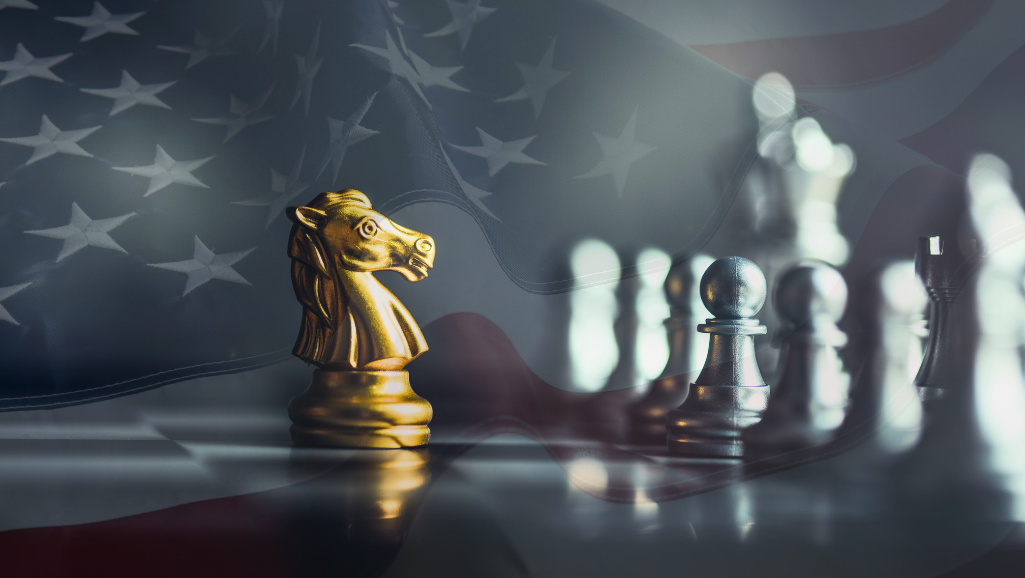

In January 2021, Washington crafted a strategy to promote an open and free Indo-Pacific region to deter its main competitor, Beijing, from dominating global political and economic influence.
The American Indo-Pacific strategy also ensured its military dominance in the region as Chinese influence grew by using “gray zone” tactics to coerce smaller and weaker neighbors, like the Philippines.
Based on the US Indo-Pacific strategy, Washington identified countries in the region as either allies and partners or as rogue states and adversaries.
The strategy created a division and fueled potential conflict in the region.
China saw an opportunity to accuse the United States of attempting to escalate tension in the South China Sea and the Taiwan Straits, saying it was only reinforcing its ideology of global leadership as the only possible form of world order.
Speaking at a regional energy forum in Bangkok in January 2024, economist Jeffrey Sachs of Columbia University in New York said the US foreign policy in the region is as dangerous as what had happened in Ukraine, with Washington pursuing a broader alliance with countries in the region against China.
US military leaders have continuously warned of a Chinese invasion of Taiwan by 2027 and more intense actions in the South China Sea.
Sachs saw a parallel between Ukraine and Taiwan, criticizing US foreign policy in the Indo-Pacific region.
Other security experts also said the US efforts to build “minor” alliances in the region to confront China could be counter-productive to prosperity and stability in the area.
It could also undermine the sovereignty of Southeast Asian states by subordinating their structures to US military, political, and economic interests.
They also said the creation of minor alliances may harm economic cooperation between China and its neighbors, particularly the Philippines.
Southeast Asian states may also be potential battlegrounds in a major conflict between the US and China over Taiwan or the South China Sea.
The US has been trying to impose its Indo-Pacific strategy on countries in the region, making members of the Association of Southeast Asian Nations (Asean) pick a side between China and the United States.
Asean has been resisting.
In a 2019 document on “Indo-Pacific Vision of the Asean,” the bloc acknowledged the necessity of strengthening its pivotal role in addressing regional challenges and supporting openness, transparency, inclusiveness, and respect for the sovereignty of any state.
Asean must remain neutral in the big powers rivalry between China and the United States.
Asean centrality must prevail, and it should always take the driver’s seat in leading which direction to take, ignoring the dictates of the big powers.
As a member of the non-aligned countries, the Philippines should consider reviewing its foreign policy and stepping on the brakes of its rapid slide to the US and other Western states.
It should learn a lesson from Vietnam and consider close economic relations with BRIC members, like Brazil, Russia, India, and China, which promote equal dialogue based on mutual respect.
Business people, academics, media, non-government organizations, and some Southeast Asian governments were quick to recognize how divisive the US Indo-Pacific strategy is, at it may hinder the prosperity and stability of the region.
In a survey done in February among nearly 2,000 respondents, a Singapore-based think tank found that Washington’s political and economic influence has started to decline not only in the Southeast Asian region but, perhaps, in the wider Indo-Pacific area.
The ISEAS-Yusof Ishak Institute’s opinion poll showed that China has overtaken the United States, for the first time, as the most preferred global power in the Southeast region.
Beijing was chosen by 50.5 percent of 10 Southeast Asian states against 49.5 percent of American support, reflecting China’s growing regional influence.
Last year’s survey showed that only 38.9 percent preferred China, and 61.1 percent chose the US.
The US scored the highest support in the Philippines and Vietnam due to China’s coercive actions in the South China Sea.
Singapore, which hosted the US Navy in its facilities, also had a higher support level.
However, China scored higher than the US in Malaysia, Indonesia, Laos, and Brunei, where Beijing has poured a lot of trade and investments under the Belt and Road Initiative.
Bonnie Glaser, managing director of the Indo-Pacific Program at the German Marshall Fund, a U.S.-based think tank, said the decline in trust and perception of decreased engagement from the US is significant, describing the US performance as “a disappointment.”
“There is a high level of expectation in Southeast Asia and desire for US engagement, particularly different kinds of engagement than the US is offering,” Glaser said.
For example, she said the Biden administration’s Indo-Pacific Economic Framework (IPEF) needs to include market access, which involves reducing or eliminating tariffs.

The survey showed that Southeast Asians did not want to choose sides at all. Asked how Asean should respond to the intensifying US-China rivalry, about 46.8 percent said it should prioritize bolstering its resilience and unity to counter pressure from both opposing powers.
The survey results must be a wake-up call for the United States to rethink its Indo-Pacific strategy. China is slowly replacing the US as the region’s most dominant economic and political power.
One day, It may wake up losing its influence in the region.

Divisive American Indo-Pacific strategy
In January 2021, Washington crafted a strategy to promote an open and free Indo-Pacific region to deter its main competitor, Beijing, from dominating global political and economic influence.

Threat or deterrence?
The US Army has deployed, for the first time, its latest intermediate ballistic missile launcher in the Philippines, a move that could draw a strong response from China.

Paano nagpapakalat ng propaganda ang Tsina sa Tiktok
Bagama’t tinanggal na ang page na ito sa naturang video streaming platform, napag-alaman ng ating himpilan na pinapatakbo ito ng China Daily, isang malaking media organization sa Tsina na pagmamay-ari ng kanilang pamahalaan.

0 Comments